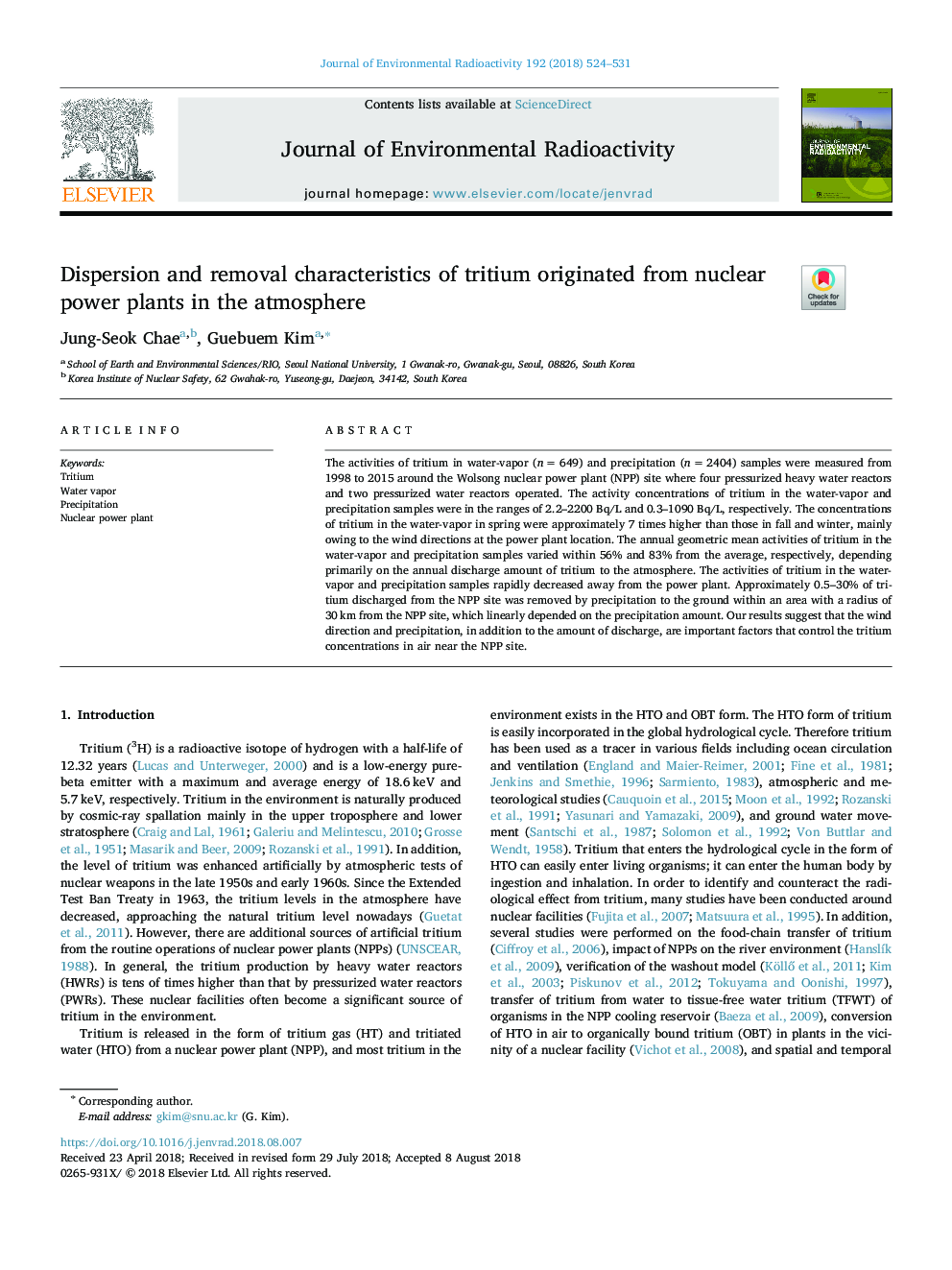| Article ID | Journal | Published Year | Pages | File Type |
|---|---|---|---|---|
| 8080375 | Journal of Environmental Radioactivity | 2018 | 8 Pages |
Abstract
The activities of tritium in water-vapor (nâ¯=â¯649) and precipitation (nâ¯=â¯2404) samples were measured from 1998 to 2015 around the Wolsong nuclear power plant (NPP) site where four pressurized heavy water reactors and two pressurized water reactors operated. The activity concentrations of tritium in the water-vapor and precipitation samples were in the ranges of 2.2-2200 Bq/L and 0.3-1090 Bq/L, respectively. The concentrations of tritium in the water-vapor in spring were approximately 7 times higher than those in fall and winter, mainly owing to the wind directions at the power plant location. The annual geometric mean activities of tritium in the water-vapor and precipitation samples varied within 56% and 83% from the average, respectively, depending primarily on the annual discharge amount of tritium to the atmosphere. The activities of tritium in the water-vapor and precipitation samples rapidly decreased away from the power plant. Approximately 0.5-30% of tritium discharged from the NPP site was removed by precipitation to the ground within an area with a radius of 30â¯km from the NPP site, which linearly depended on the precipitation amount. Our results suggest that the wind direction and precipitation, in addition to the amount of discharge, are important factors that control the tritium concentrations in air near the NPP site.
Related Topics
Physical Sciences and Engineering
Energy
Nuclear Energy and Engineering
Authors
Jung-Seok Chae, Guebuem Kim,
